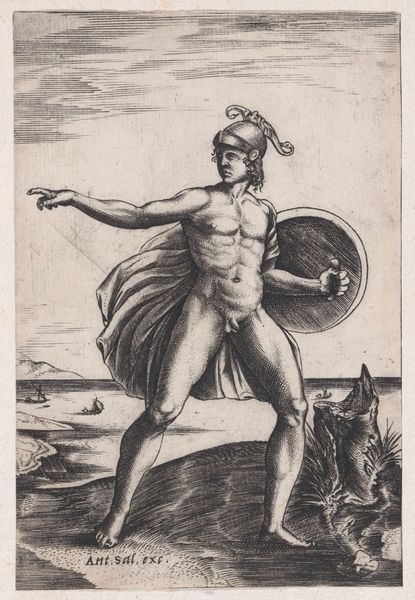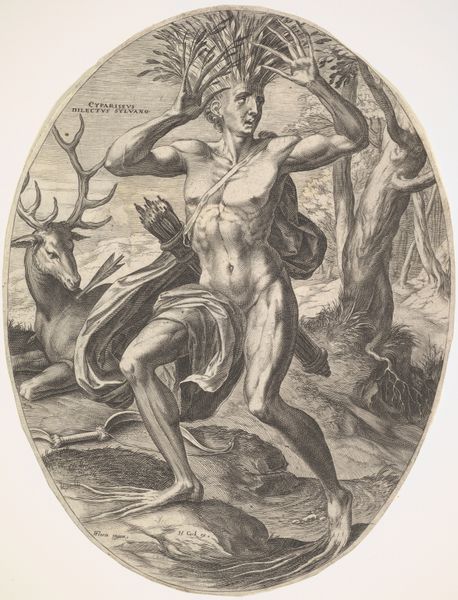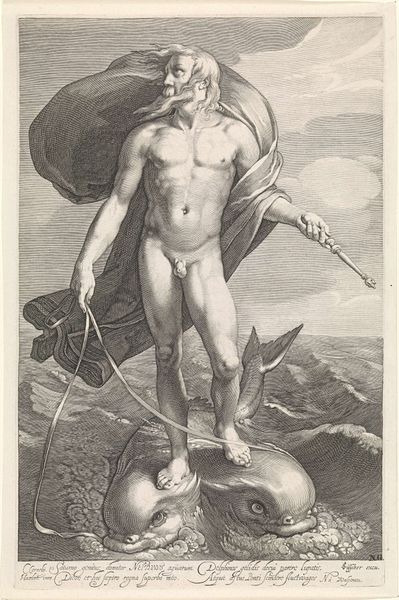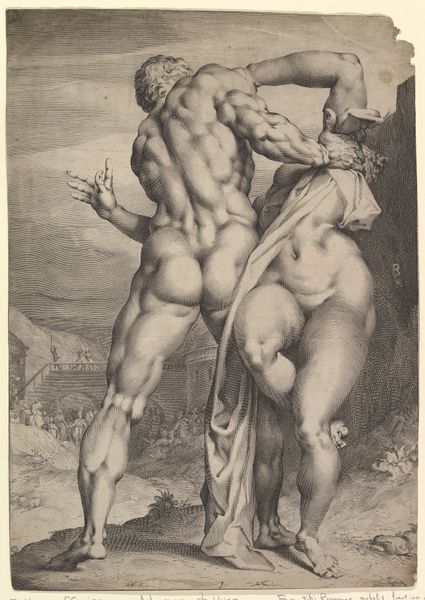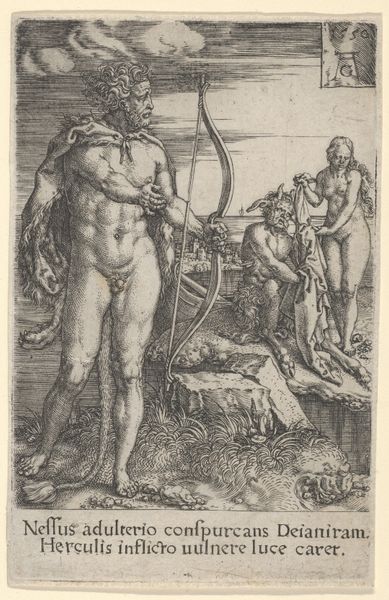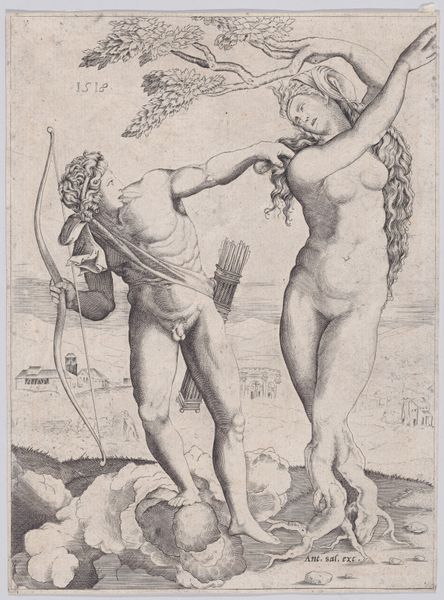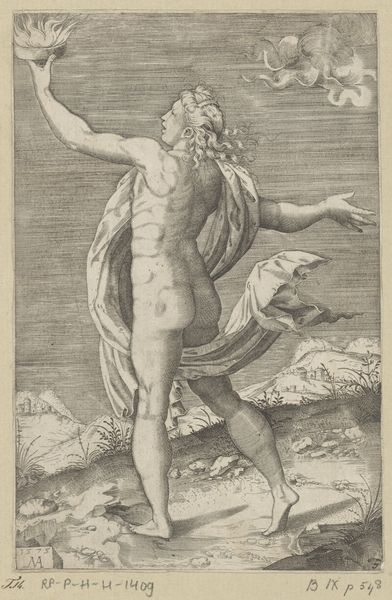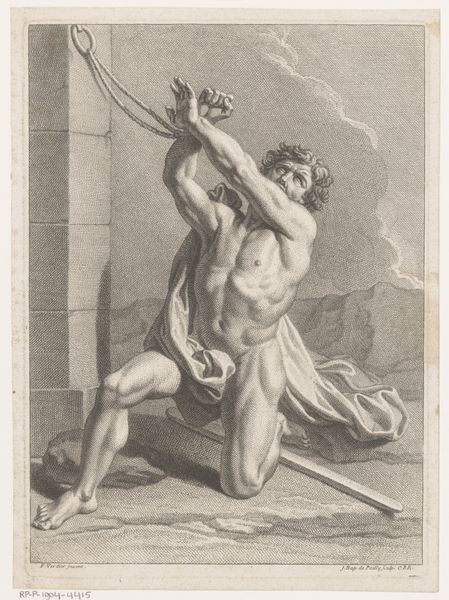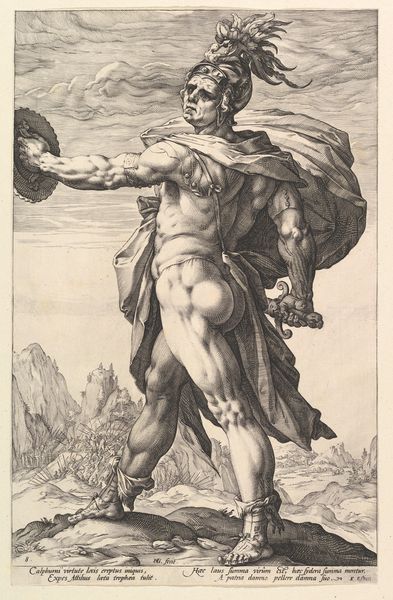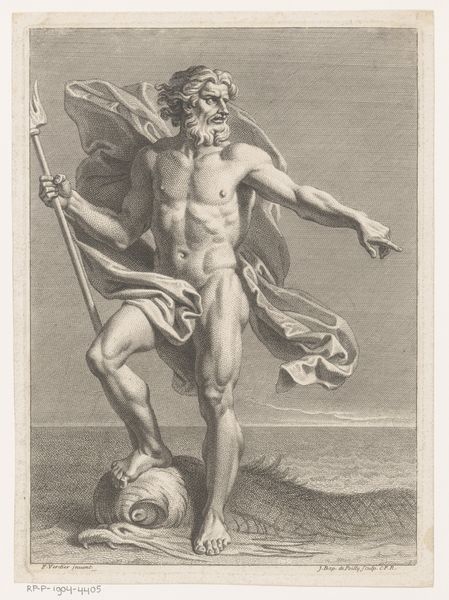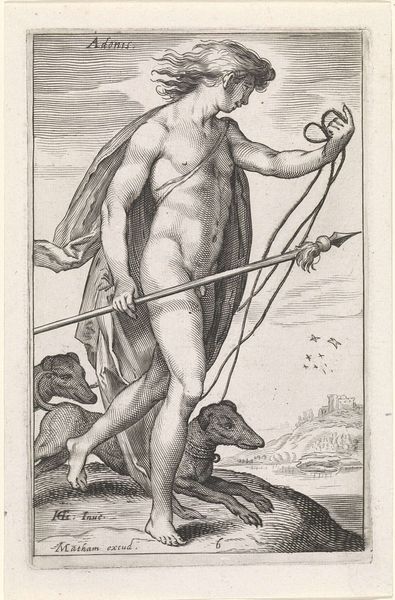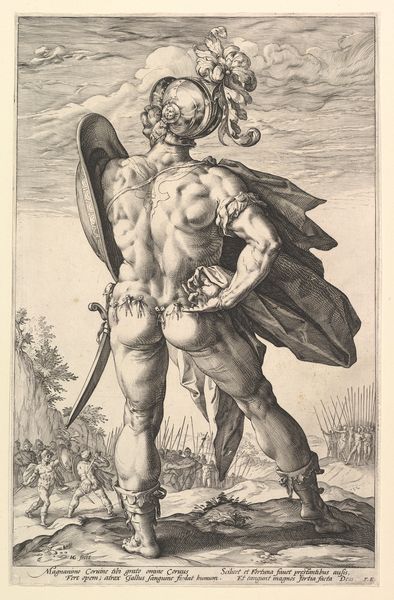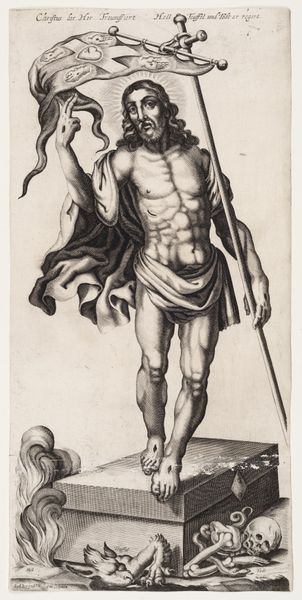
print, engraving
# print
#
mannerism
#
figuration
#
history-painting
#
academic-art
#
nude
#
engraving
Dimensions: 413 mm (height) x 307 mm (width) (bladmaal)
Editor: We're looking at Jan Harmensz. Muller's "Apollon dræber Python," an engraving from around 1596-1599. The figure of Apollo is so striking! The line work is incredible and the overall effect is powerful and dramatic. What stands out to you when you look at it? Curator: Primarily, I am drawn to the meticulous execution of line. Consider the dynamism achieved solely through varying line weight and density, building form, and even light. Note how Muller uses hatching to create depth in Apollo’s musculature and contrast this with the smoother, more delicate treatment of the background. How does this structuring of visual weight inform the narrative? Editor: That’s a good point; the foreground definitely feels more active because of that contrast. It also creates a tension with the landscape fading into the background... Curator: Precisely. Consider, too, the deliberate posing of the figure. The contrapposto stance, with Apollo's weight shifted to one leg, lends a sense of poised energy. Observe the carefully considered placement of limbs, each contributing to a balanced, yet dynamic composition. In what ways do you think the medium–an engraving–impacts the aesthetic quality of the piece? Editor: Knowing that it's an engraving makes me appreciate the technical skill even more! The crispness of the lines really highlights the precision and control Muller had. Curator: Indeed. The graphic nature of engraving lends itself to a certain clarity and intensity of form. Furthermore, the lack of color directs the viewer's focus toward line, shape, and the inherent tensions within the composition. Ultimately, it’s about the formal relationships at play. Editor: This has definitely made me think about prints in a new way, especially appreciating the lines as building blocks. Curator: And it underscores the importance of carefully observing formal elements when interpreting art.
Comments
No comments
Be the first to comment and join the conversation on the ultimate creative platform.
